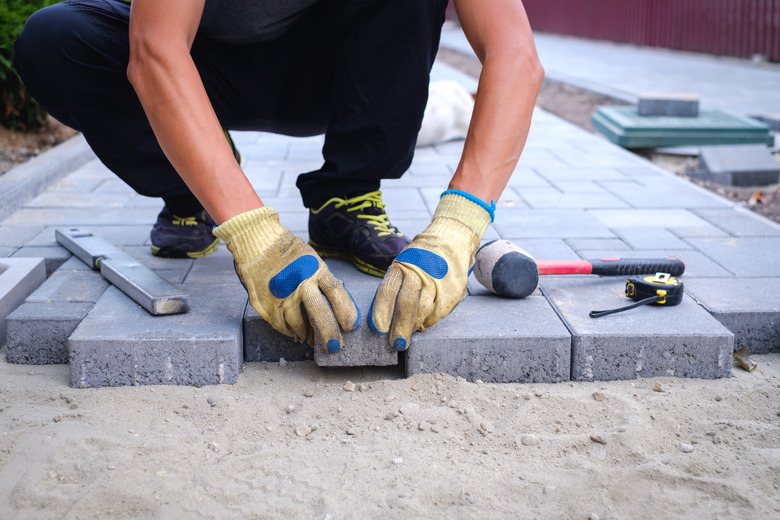How Much Of A Gap To Leave Between Pavers
We may receive a commission on purchases made from links.
Installing pavers is one of those deceptive jobs, as it can look easier than it is. Like many things in life, perfecting it can be an art because it all comes down to leveling and arrangement. The good news is that there are no paver police who will be slapping you with a fine if your interpretation of the gap between pavers is different from the norm.
Minding the Gap
Minding the Gap
It can be tempting to scoff at the precision needed in spacing pavers. Why not just press them together and be done with the fuss? It's important because the elements are always a factor, and the pavers always respond to the elements. They'll swell and contract — not enough that you'll notice but just enough to be a problem if you dare to disregard the gap.
The recommended distance the pros advise is a gap of 3 millimeters, or roughly 1/8 inch. Stack two quarters on top of each other and that's the thickness you're after for your standard paver gap. It's not much, but it's just enough to provide movement with the sand fill no matter the season.
Size Considerations for Gaps
Size Considerations for Gaps
From traditional brick pavers to large-format concrete pavers, the choice in gap size is as much aesthetic as it is practical. A good maxim is "less is more" so you avoid too much movement over time, but it really depends on where the pavers are going. Then, it depends on your material of choice. Some bricks look great with 1/2-inch gaps, while large concrete pavers are best with the minimal 1/8-inch approach.
For instance, for a walkway with 16- or 20-inch concrete pavers, wider gaps are fine and can be part of the aesthetic. You can even do the distant stepping stone approach with 6 or 8 inches of gravel or sod between those walkway pavers. But if you're decking out a new backyard space for your umbrella-covered table, keep them snug and sturdy with narrow gaps so the patio surface remains stable with use.
If you're anxious about consistent gaps, the old-school method uses spacers for the right distance between pavers. Today, there are lots of click-and-lock-style products with built-in ridges to get a precise space between paver. If you have a large project, such products could save you some time and exasperation with consistent gap-making for something like a patio or driveway.
Preparation Is Everything
Preparation Is Everything
Installing pavers isn't a job you want to rush because fixing a problematic install down the line will be an even bigger headache than doing it the right way the first time around. Don't cut corners when preparing the base and you'll have a far easier job laying the actual pavers. The base is the most important part of your paver installation because it is what ensures it will be level and solid for years to come.
